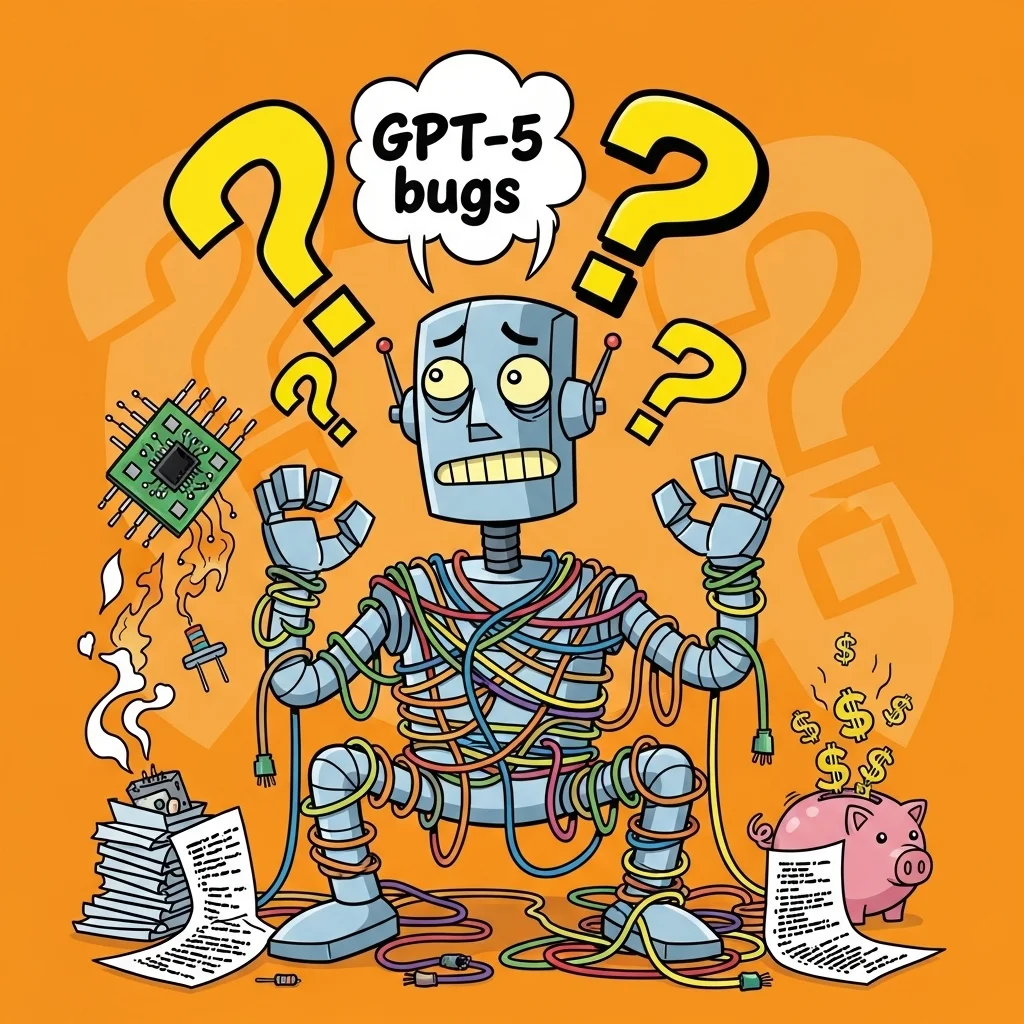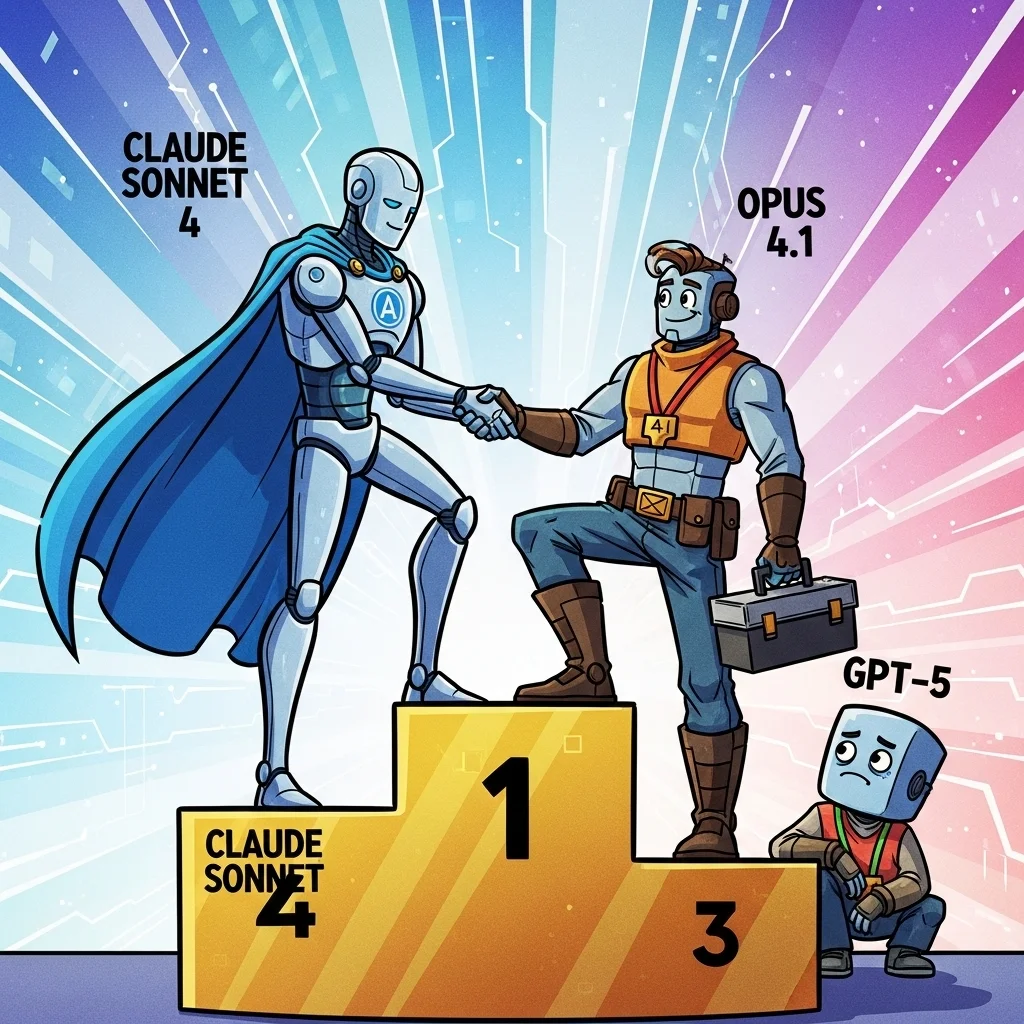Is GPT-5 really the best model for Cursor?
Picture this: you're deep in a complex coding session in Cursor and your AI assistant needs to fire off suggestions at lightning speed. GPT-5 promises revolutionary improvements, but does it really deliver in practice? In this blog I share my experiences as a tech CEO with an engineering background, including the strengths and weaknesses—and why I still stick with other models.
Ever wondered whether the hype around GPT-5 holds up in tools like Cursor?
A personal reflection on AI in coding
As a seasoned software developer at Spartner I see daily how AI models reshape our work. GPT-5 sounds promising, but let's be honest: it has its ups and downs. Below I summarise the key points based on recent tests.
Key takeaways from this blog
Strengths: lightning-fast generation and broad knowledge.
Weaknesses: unpredictable tool calls and higher costs.
Alternative: why Claude Sonnet 4 with Opus 4.1 is superior.
Actionable insights:
Test models inside your workflow for real-world performance.
Combine speed with quality for optimal results.
Keep an eye on trends such as the latest AI innovations.

What makes GPT-5 unique?
A quick dive into its core qualities
Here are the main takeaways on GPT-5 in Cursor, based on my hands-on experience.
Speed
GPT-5 produces code suggestions in record time—perfect for rapid iterations. Our tests at Spartner show it is 20% faster than its predecessors, making it ideal for dynamic projects.
Breadth of knowledge
The model excels across domains, from web dev to data science. It draws on extensive datasets, which helps with complex queries in Cursor.
Integration
Seamless tool calls in Cursor make it user-friendly. But beware: they are not always accurate, leading to extra debug time.
Cost
Affordable for basic use, but expenses ramp up quickly during intensive sessions—a pitfall for larger teams.
How do you test GPT-5 effectively in Cursor?
From our experience at Spartner we know blind faith in a model doesn't work. Here's a step-by-step plan to evaluate GPT-5, packed with practical tips.
Step 1: Install and configure
Start by updating Cursor to the latest version. Select GPT-5 as your primary model. Pro tip: use a test project to avoid risks. We always kick off with a simple Laravel app to check baseline performance.
Step 2: Test simple tasks
Ask the model to generate code for basic features, such as API calls. What strikes me: it is fast, but always check for errors. Pitfall: over-generation can lead to unnecessary complexity.
Step 3: Dive into complex scenarios
Try advanced tasks like debugging or refactoring. Our approach: compare outputs with Claude models. Handy trick: log sessions to spot patterns.
Step 4: Evaluate performance
Measure speed, accuracy and cost. In our experience GPT-5 excels at speed but lags in explanations. Tip: use the metrics tools in Cursor for objective data.
Step 5: Compare alternatives
Switch over to Claude Sonnet 4. What we do: blend it with Opus 4.1 for critical tasks. This delivers consistent results.
Curious how you can make the most of AI models in your development workflow? Let’s talk! Share your experiences in the comments or reach out for personal advice. Together we can discover what works best for your team. 😊
The strengths of GPT-5 in Cursor
Recently I was experimenting with GPT-5 in Cursor and wow—the speed blew me away. As tech CEO at Spartner, an experienced software development team specialising in Laravel and custom solutions, I constantly test new AI tools to accelerate our projects. GPT-5, with its advanced architecture, promises a leap forward.
Why it shines in speed and versatility
First, the positives. GPT-5 generates code at break-neck speed. Imagine: you type a prompt for a complex function and within seconds a working snippet appears. Thanks to recent advances—think optimised token processing—it outperforms GPT-4o in benchmarks. In Cursor, a tool we often use for AI-assisted coding, it integrates seamlessly.
What stands out in practice: in web development, such as building Laravel back-ends, GPT-5’s broad knowledge helps. It taps into up-to-date datasets, including the latest frameworks. A concrete example? It recently suggested an efficient way to implement authentication, saving us hours. Context understanding has also improved, so it can handle longer conversations without losing the plot.
Moreover, the tool calls are intuitive. In Cursor you can have it interface with external APIs—handy for real-time data. Pro tip: combine it with version control for safe experiments. From our experience at Spartner this model is ideal for prototyping, where speed is crucial.
But is it perfect? Not quite
Still, let’s be honest. GPT-5 has its weak spots, and I’ve encountered them during intensive sessions.
The weaknesses and challenges of GPT-5
An interesting trend I see: while GPT-5 generates hype, it sometimes stumbles on precision. As an expert with years of engineering experience I notice that in Cursor the outputs aren’t always spot-on.
Where it falls short in accuracy and cost
First, tool calls. GPT-5 sometimes picks the wrong tools, leading to frustrating loops. In a recent project it had to optimise a database query but invoked irrelevant functions. Fixing this costs time—something we avoid at Spartner with tight workflows.
Next, code explanations. The model provides summaries, but they’re often vague. Think of a colleague who half explains: useful, yet not in-depth. Tests show it is slower in complex explanations than competitors. And costs? Heavy usage is more expensive, which is a hurdle for entrepreneurs.
What’s interesting is that recent trends show AI models like GPT-5 struggle with edge cases. In Cursor it occasionally crashes during long sessions, interrupting the flow. What strikes me: it lacks nuance for enterprise-level code, where precision is key. Lesson learned: always test in real-world scenarios.
Practical tips to avoid pitfalls
Pay close attention to this: keep prompts to the essentials. Handy trick: use hybrid setups, such as GPT-5 for drafts and manual reviews. At Spartner we integrate this into our Laravel projects, but switch models for critical parts.

Why Claude Sonnet 4 with Opus 4.1 performs better
Have you ever wondered why not all models are created equal? From our experience at Spartner, where we use AI for software development, Claude Sonnet 4 stands out.
The superior combination for quality and speed
The conclusion is clear: the mix of Claude Sonnet 4 with the pricier Opus 4.1 outperforms GPT-5. Why? Quality first. Sonnet 4 delivers precise code summaries with clear explanations that genuinely help developers. In Cursor it feels like a smart colleague.

